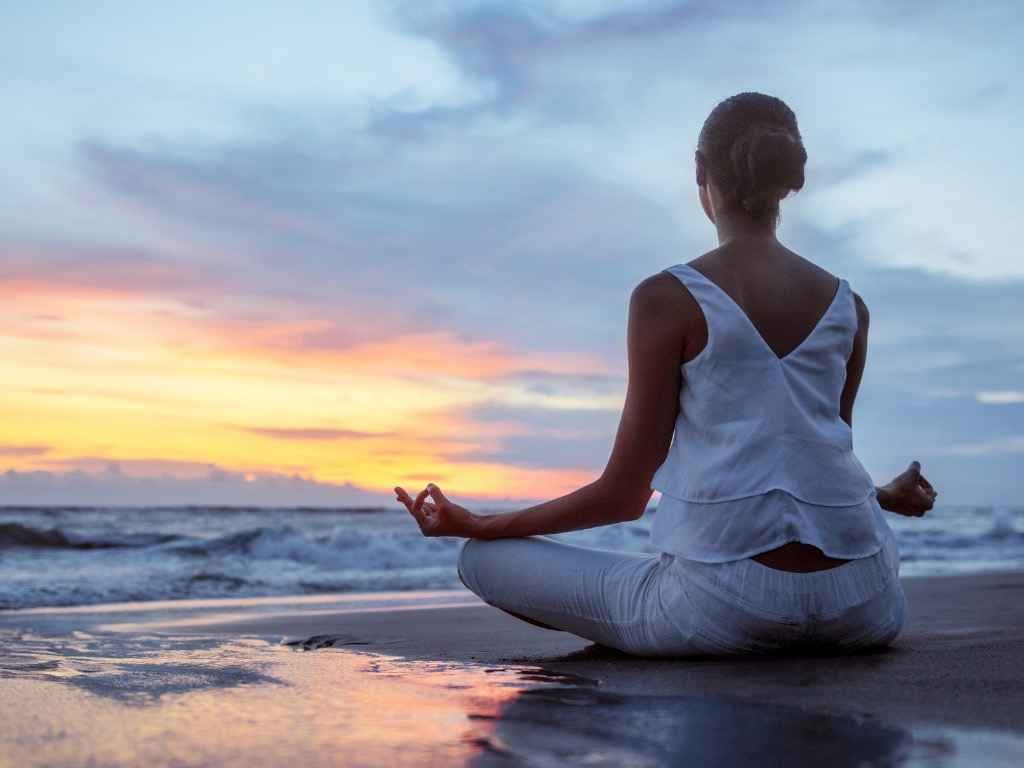Relaxation techniques for anxiety are simple yet powerful tools that can help you feel calmer, ease your racing thoughts, and restore your mental balance. In today’s fast-paced world, it’s easy to get caught up in constant stress — but with the right strategies, you can create moments of peace no matter how busy life gets.
In today’s fast-paced world, it’s common to feel like you’re constantly “on the go.” However, neglecting your mental well-being can have serious consequences. Effective stress relief methods are crucial for achieving a balanced life.
This article will explore 7 proven relaxation techniques to help you manage anxiety and improve your focus. By incorporating these methods into your daily routine, you can enhance your overall well-being.
Key Takeaways
- Discover effective relaxation techniques to manage anxiety
- Improve your focus with simple stress relief methods
- Enhance your overall well-being with proven techniques
- Learn how to incorporate relaxation into your daily routine
- Reduce anxiety and improve mental clarity
The Impact of Anxiety on Mental Focus and Well-being
Anxiety affects millions of people worldwide, making it hard to focus and make decisions. It can really get in the way of your daily life.
How Anxiety Affects Cognitive Function
Anxiety can make it hard to focus because it distracts you from what you need to do. It can also hurt your performance and productivity. Studies show that too much anxiety can mess with your memory, making it tough to remember things.
Psychologist Dr. Joseph Wolpe says, “Anxiety is a complex issue that can hurt your thinking.” It can also make you too alert, making it hard to stay on one task. Knowing how anxiety affects your brain can help you find ways to fight it.
The Science Behind Stress and Concentration
Stress and concentration are closely linked. When you’re stressed, your body goes into “fight or flight” mode, releasing stress hormones. But too much stress can harm your brain and make it harder to focus.
Dr. Lisa Feldman Barrett explains, “Your brain plays a big role in how you respond to stress.” To manage anxiety and improve focus, try relaxation techniques, change your lifestyle, and work on your thinking skills.
Why Relaxation Is Essential for Mental Performance
Relaxation is key for our mental performance. It helps us concentrate and make decisions better. When we’re relaxed, our minds can focus better, leading to more productivity and performance.
Practicing mindfulness for anxiety boosts our mental clarity. It makes us think clearer and react faster.
Relaxation techniques lower stress and anxiety’s negative effects on our minds. Adding these to our daily routine boosts our mental strength. We stay focused, even when things get tough.
The Physiological Benefits of Relaxation
Relaxation offers many benefits for our mental health. It turns off our body’s stress response, reducing stress hormones. This lowers blood pressure, heart rate, and muscle tension.
Our brain works better in a calm body. It’s like a stable base for our thoughts.
- Reduced muscle tension
- Lower blood pressure
- Improved sleep quality
Creating Mental Space for Better Focus
Having mental space is vital for focus and performance. Relaxation techniques like calming exercises for stress clear our minds. This lets us focus on what’s important.
Meditation and deep breathing help us find this mental space. They improve our concentration and sharpness.
Technique1: Deep Breathing Exercises
Deep breathing exercises are a simple yet effective way to relax. They help calm your mind and reduce stress. By focusing on your breath, you can find peace.
Deep breathing involves slow, deep breaths to relax your body. It’s easy to do anywhere, making it a great stress relief method.
Box Breathing Method
The box breathing method is easy to follow. Breathe in for 4 counts, hold for 4 counts, breathe out for 4 counts, and hold again for 4 counts. This creates a “box” shape with your breath, helping you feel balanced and calm.
Diaphragmatic Breathing Practice
Diaphragmatic breathing uses your diaphragm, the muscle between your chest and belly. To start, put one hand on your belly and the other on your chest. Breathe in deeply through your nose, letting your belly rise while your chest stays still.
4-7-8 Breathing for Instant Calm
The 4-7-8 breathing technique, or “relaxation breath,” is simple. Inhale through your nose for 4 counts, hold for 7 counts, and exhale through your mouth for 8 counts. It can slow your heart rate and help you relax.
When to Use This Technique
Use deep breathing exercises when you’re stressed or anxious. Regular practice can also boost your mental health.
Common Mistakes to Avoid
A common error is not breathing deeply enough. Make sure to use your diaphragm and take full breaths. Also, avoid practicing in noisy places. Find a quiet spot to get the most benefit.
Adding deep breathing exercises to your daily routine can be a powerful tool. It helps manage anxiety and improves focus.
Technique2: Progressive Muscle Relaxation (PMR)
Progressive Muscle Relaxation (PMR) is a practical way to release physical tension. It involves tensing and relaxing different muscle groups. This helps you reach a deep state of relaxation.
Step-by-Step PMR Guide
Start by getting into a comfortable position, like sitting or lying down. Begin with your toes, tensing them for a few seconds before releasing. Then, move up your body, tensing and relaxing each group in turn.
This includes your feet, calves, thighs, hips, back, shoulders, arms, hands, neck, and head. With each release, feel the relaxation spread through your muscles.
Modified PMR for Work Settings
At work, it’s hard to lie down or tense major muscle groups. But, you can still do PMR discreetly at your desk. Try tensing and relaxing your shoulder muscles or subtly tightening and releasing your forearm muscles while typing.
Combining PMR with Other Techniques
PMR works well with other relaxation techniques like deep breathing or mindfulness meditation. For example, you can breathe deeply while tensing and relaxing your muscles. Or, do a PMR session and then meditate for a few minutes to calm your mind.
Measuring Your Progress with PMR
To see how PMR is working for you, notice how your body feels after each session. Keep a journal to track any changes in muscle tension or relaxation. Over time, you’ll find it easier to relax, even when things get stressful.
Technique3: Mindfulness Meditation Practices
Mindfulness meditation is simple yet powerful. It helps you focus on the present moment without judgment. This practice brings calm and clarity to your life.
Basic Mindfulness for Beginners
Start by finding a quiet, comfy spot to sit. Close your eyes and focus on your breath. Feel the air move in and out of your nostrils.
When your mind drifts, gently bring it back to your breath. Don’t judge yourself.
Regular practice makes you more aware of your thoughts and feelings. This helps you handle stress better.
Body Scan Meditation Technique
For body scan meditation, lie down or sit comfortably. Focus on each part of your body, starting from your toes and moving up to your head. Notice any sensations or tension without trying to change it.
This technique helps release physical tension and promotes relaxation.
| Meditation Technique | Primary Benefit | Secondary Benefit |
|---|---|---|
| Basic Mindfulness | Reduces stress and anxiety | Improves focus and concentration |
| Body Scan Meditation | Relaxes the body | Enhances body awareness |
Mindful Awareness in Daily Activities
Mindfulness isn’t just for meditation. You can be mindful during everyday tasks like eating, walking, or doing dishes. Focus on the sensations, sights, and sounds around you. Stay fully present in the moment.
Scientific Evidence for Mindfulness Benefits
Studies show mindfulness changes the brain for the better. It improves emotional control, reduces stress, and boosts cognitive function. It also helps with anxiety and depression symptoms.
Adding mindfulness to your daily routine can lead to a more balanced and fulfilling life.
Technique4: Guided Imagery and Visualization
Guided imagery can greatly reduce stress and boost your mental health. It uses your imagination to create a calm and relaxing mental scene.
Creating Your Mental Sanctuary
Start by finding a quiet, comfy spot to sit or lie down. Close your eyes and breathe deeply. Picture yourself in a peaceful place, like a beach or forest, where you feel at ease.
Use all your senses to make this mental space real. Listen to sounds, feel textures, and smell scents around you.
As you dive into this calm scene, let go of any tension or stress. Regular practice lets you easily return to this relaxed state.
Goal-Oriented Visualization for Focus
Guided imagery can also boost focus and motivation. Imagine yourself achieving your goals. Picture the steps to get there and the joy of success.
Key steps include:
- Identifying your goals clearly
- Visualizing the process and the outcome
- Emotional connection to the achievement
Using Guided Imagery for Sleep Improvement
Guided imagery is great for better sleep. Imagine a peaceful scene to calm your mind and body, helping you sleep.
“Guided imagery can be a valuable tool for managing stress and anxiety, promoting relaxation and improving overall well-being.” –
Dr. Andrew Weil
Resources for Guided Imagery Sessions
For beginners, many resources are available. You can find apps, videos, and audio recordings. Some popular ones include:
| Resource | Description |
|---|---|
| Headspace | Guided meditation and imagery app |
| Calm | Relaxation and sleep stories |
| YouTube Guided Imagery Channels | Various guided imagery sessions |
Try out different resources to find what suits you best. This will enhance your relaxation practice with guided imagery and visualization.
Proven Relaxation Techniques for Anxiety in High-Stress Environments
High-stress environments can be tough. It’s key to have good ways to relax and manage anxiety. By adding certain strategies to your day, you can lower your stress.
Technique5: Grounding Exercises for Panic Attacks
Grounding exercises are great for handling panic attacks. They keep you in the now, away from worries. Here’s how to do it:
- Feel your feet on the ground.
- Listen to the sounds around you.
- Use your senses to stay present.
Technique6: Quick Desk-Based Relaxation Methods
You can relax at your desk without leaving. Simple desk exercises can help. Try these:
- Breathe deeply, feeling each breath.
- Stretch your shoulders, neck, and arms while sitting.
- Do a quick body scan, letting go of tension as you breathe out.
Technique7: Social Anxiety Coping Strategies
Social anxiety is tough, especially in stressful places. Here are some ways to handle it:
- Get ready for social situations beforehand.
- Use positive words to yourself to feel more confident.
- Take breaks to recharge when you need to.
Emergency Anxiety Management Tools
For sudden anxiety, having quick tools can help a lot. Carry something comforting or learn a fast, quiet way to relax, like a quick breathing exercise or a silent mantra.
By using these relaxation methods every day, you can handle anxiety better in stressful situations. This will also make you feel better overall.
Physical Activities That Enhance Relaxation and Mental Clarity
Doing physical activities can really help you relax and think more clearly. Exercise is good for your body and mind. Adding certain activities to your day can help you handle stress and anxiety better.
Yoga Sequences for Anxiety Relief
Yoga is great for easing anxiety and finding peace. Some yoga routines are made to calm your mind and body. They include gentle stretches, deep breathing, and poses that help you relax.
Doing yoga often can help you manage your emotions better. It makes you feel calm and centered.
Tai Chi and Qigong Benefits
Tai Chi and Qigong are old practices that mix movement, breathing, and meditation. They help you relax and focus better. These slow, flowing movements reduce stress and improve your concentration.
Practicing Tai Chi or Qigong regularly can make you feel better overall. It brings balance to your life.
Walking Meditation Practice
Walking meditation is a mindfulness practice that focuses on your walking. It’s a good way to be mindful and lower stress. Paying attention to each step brings calm and clarity to your mind.
This practice is great for those who can’t sit still for meditation.
Integrating Movement with Breathing
These activities are special because they mix movement with breathing. Synchronizing your breath with your movements makes these practices even more relaxing. This approach calms your mind and body, improving your mental clarity and reducing anxiety.
Creating Your Personalized Relaxation Routine
Creating a relaxation routine that’s just for you can really boost your mental health. First, figure out what you need to relax. Then, find a routine that fits your life.
Assessing Your Specific Relaxation Needs
Start by finding out which relaxation techniques for anxiety work best for you. Think about what makes you stressed and how you usually handle it. Knowing this helps you pick the right techniques for your routine.
Building a Sustainable Practice Schedule
Being consistent is crucial for enjoying relaxation techniques. Start with small, manageable sessions and grow them as you get more comfortable. Adding stress relief methods to your daily life can greatly improve your well-being.
Tracking Your Progress and Adjusting Techniques
Use a journal or app to track your relaxation practice and its effects. This helps you see which techniques work best and adjust your routine as needed.
Technology Tools for Relaxation Practice
Use technology to boost your relaxation practice. Apps like Headspace and Calm offer guided meditations and exercises. They can be customized to fit your needs, helping you stay consistent.
Conclusion: Transforming Your Relationship with Anxiety
You now have a complete set of tools to manage anxiety and boost focus. By using the 7 proven relaxation techniques, you can change how you deal with anxiety. This will help you achieve a more balanced mind.
Deep breathing, progressive muscle relaxation, and mindfulness meditation are just a few techniques that can help. They calm your mind and body. This lets you face daily tasks with clarity and confidence.
Being consistent is crucial. Regular use of these tips will bring long-term benefits. You’ll see better mental health and improved focus. As you keep practicing, you’ll learn to handle stress better.
By prioritizing relaxation, you’re taking a big step towards managing anxiety. This will lead to a more rewarding life. You’ll be able to handle challenges with more ease and grace.
FAQ
What are some effective relaxation techniques for anxiety?
Deep breathing exercises and progressive muscle relaxation can help. Mindfulness meditation, guided imagery, and yoga are also good. Tai Chi is another option.
How can I start practicing mindfulness for anxiety relief?
Start with simple mindfulness exercises like focusing on your breath. Then, add it to your daily routine. This can help reduce anxiety.
What is the 4-7-8 breathing technique, and how does it help with anxiety?
The 4-7-8 technique involves breathing in for 4 counts, holding for 7, and exhaling for 8. It calms your nervous system and lowers anxiety.
Can physical activity really help with anxiety and stress relief?
Yes, activities like yoga, Tai Chi, and walking meditation can help. They promote relaxation and improve mental clarity.
How often should I practice relaxation techniques for anxiety?
Practice daily, even for just a few minutes. Consistency leads to lasting benefits and better anxiety management.
Are there any technology tools that can aid in relaxation practice?
Yes, there are apps, guided meditation recordings, and online resources. They can help you start and track your progress.
Can I combine different relaxation techniques for better results?
Yes, mixing techniques like deep breathing with progressive muscle relaxation or mindfulness meditation can be effective. It helps you find what works best for you.
How long does it take to see the benefits of relaxation techniques for anxiety?
Relaxation techniques can offer immediate benefits. But, consistent practice over time leads to more significant and lasting improvements in anxiety management.






